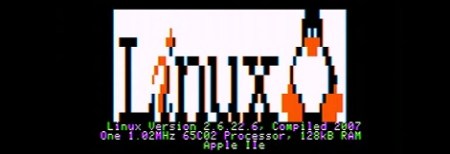
When [Vince] saw a coworker give a presentation with an iPad, he thought to himself what a tremendous waste of computing resources he was witnessing; an iPad is just as powerful as an early Cray supercomputer, and displaying slides isn’t a computationally intensive task. We’re assuming [Vince]’s train of thought went off the rails at that point, because he came up with a neat way to give a presentation with an Apple ][.
To get his slides onto his Apple ][, [Vince] created a tool to convert the text and images for a presentation to an Applesoft BASIC program. Yes, six-color images are supported in a wonderful 280×192 resolution. The presentation was transferred onto a CompactFlash card and loaded onto the Apple with the help of a CFFA card, making it much faster to load images during the presentation than a 5.25″ disk would allow.
Of course, after the presentation some of [Vince]’s coworkers wanted to play Oregon Trail, a request easily handled by the voluminous CF card loaded with Apple ][ programs. You can check out video demo/walkthrough of his presentation after the break.
[youtube=http://www.youtube.com/watch?v=wB0y-jSNW_c&w=470]
















now someone write a program to read .ppt off an sd card and put it on composite with the propeller.
Love it! Stick that in your pad! wait…
Bah, I did my presentation using an Arduino and a Micro VGA. http://www.youtube.com/watch?v=u0Znbyr7ijk
:)
I knew I was saving it for a reason.
Moser, Linus Akesson did that already for this talk on chiptunes last year.
Aww man, I’m jealous.
I had to make do with tape storage on my Apple. *sigh*
Well, he DID troll the shit out of that iPAD fanboy, lol.
I once held a presentation about computer history on a 25 MHz 486 Laptop (I needed SVGA and I suck at 6502 ASM, otherwise I would have used a Commodore 64). It had some animations (including a “working” PONG game on one of the slides) and lots of pictures. It fit a 3.5 inch floppy with 3 allocation units left or so…
Just some minor corrections; I used the USB-Key input on the CFFA 3000 card, not the CF adapter. Either would have worked.
Apple II dos3.3 disk images are 140k each, but the total usage for the presentation was only about 56k for images and 17k for the BASIC program.
While in theory the CFFA card can provide faster disk access speeds, in practice the Apple II does exact disk timings in software (6502 cycle counting) so you really can’t speed up disk accesses much if you want to be compatible. The speeds you see in the movie are the same you’d see on an actual disk drive, except for the part where I edited out about 10s of loading the basic program from disk because it was boring.
I primarily like using the CFFA card because it makes transferring code from my Linux box to the Apple II much easier. No crazy serial cables needed, no dragging around disk drives or trying to find single-density 5 1/4″ disks without bad sectors.